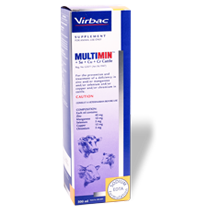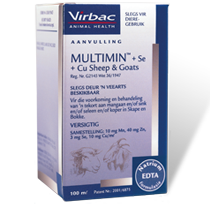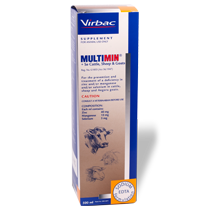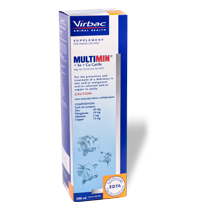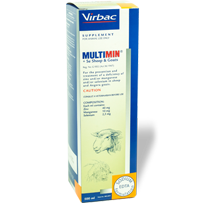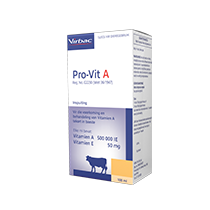
Vitamin A - What Does it Do?
Vitamin A is necessary in ruminants for many functions including vision, bone growth, immunity and maintenance of skin tissues. Vitamin A deficiency results in night blindness and affects bone development resulting in malformed bones and joints. Mucous membranes also become more susceptible to infection, most notably when eye infections occur. Vitamin A directly affects immunity, through both production of antibodies and through maintaining an adequate barrier to infection with healthy skin cells. Vitamin A deficiency not only compromises the integrity of the mucous membranes and skin that serve as first-line defence barriers, but also reduces the primary antibody response in the event of infection.
Vitamin A deficiency often results in a loss of tissue function and increased susceptibility to infection. Thickening and hardening of tissues of the digestive and respiratory tracts results in diarrhoea and pneumonia. The reproductive tract is also affected, resulting in poor sperm production in bulls and abortion in cows, as well as retained placenta.
How Do Cattle Get Vitamin A?
Plants produce carotene, which the ruminant then converts into vitamin A. The greenness of the plant is a relatively good indicator of the carotene content. Fresh forages and early cut, leafy, green hays have high carotene content. Cereal grains (excluding yellow maize) have poor carotene content. While yellow maize has more carotene than other cereal grains, its content is only one-tenth that of well-cured quality hay.
Ruminants on high-grain diets (e.g. feedlot cattle) sometimes do not have adequate access to green growing forages are most susceptible to vitamin A deficiencies. Even animals grazing off natural pastures / veld may suffer from vitamin A deficiency. This happens most commonly during winter months when forages are dormant, but also in situations of overgrazing or drought too.
Vitamin A is stored in the liver during times of abundance to help animals cope during scarce periods. Healthy cattle can store vitamin A to last for up to 3 months. Sheep are even better at storing vitamin A – up to 6 months. Young animals have much less storage capacity. Borderline deficiency is much more common than severe deficiency and the need for vitamin A is greatest during calving, breeding and other times of stress.
All sources of vitamin A are relatively unstable and degrade over time. The carotene content of cut hay decreases during the curing process and then the content of the cured hay decreases during storage. Under average conditions, the carotene content of hay can drop roughly 6 to 7% per month. Thus, hay that is over 6 months old has lost at least half of its carotene content.
In cattle, vitamin A needs are highest during stressful periods like calving and lactation. Given that many of our cattle calve before green grass is abundant, it is critical to supplement these cows with adequate vitamin A, through pregnancy and lactation. Once pastures are green and lush again, one can safely cut back on supplemental vitamin A.
Synergism between Vitamins and minerals
Vitamins A and E and Multimin (Zinc, manganese, selenium & copper or chromium) are commonly administered together at crucial “top-up” times, such as prior to mating or calving, as there is significant interaction between them. Together they help improve fertility, immunity, conception rate and production.
Selenium + Vitamin E serve as a potent anti-oxidant and adequate levels help to ensure:
Lowered incidence of retained placentas, mastitis, metritis and cystic ovarian disease.
Improved immunity, higher conception rate, maximum fertility and production
References:
https://pdfs.semanticscholar.org/260e/0819daf496f3d51dff2541384da564bd1b5c.pdf

